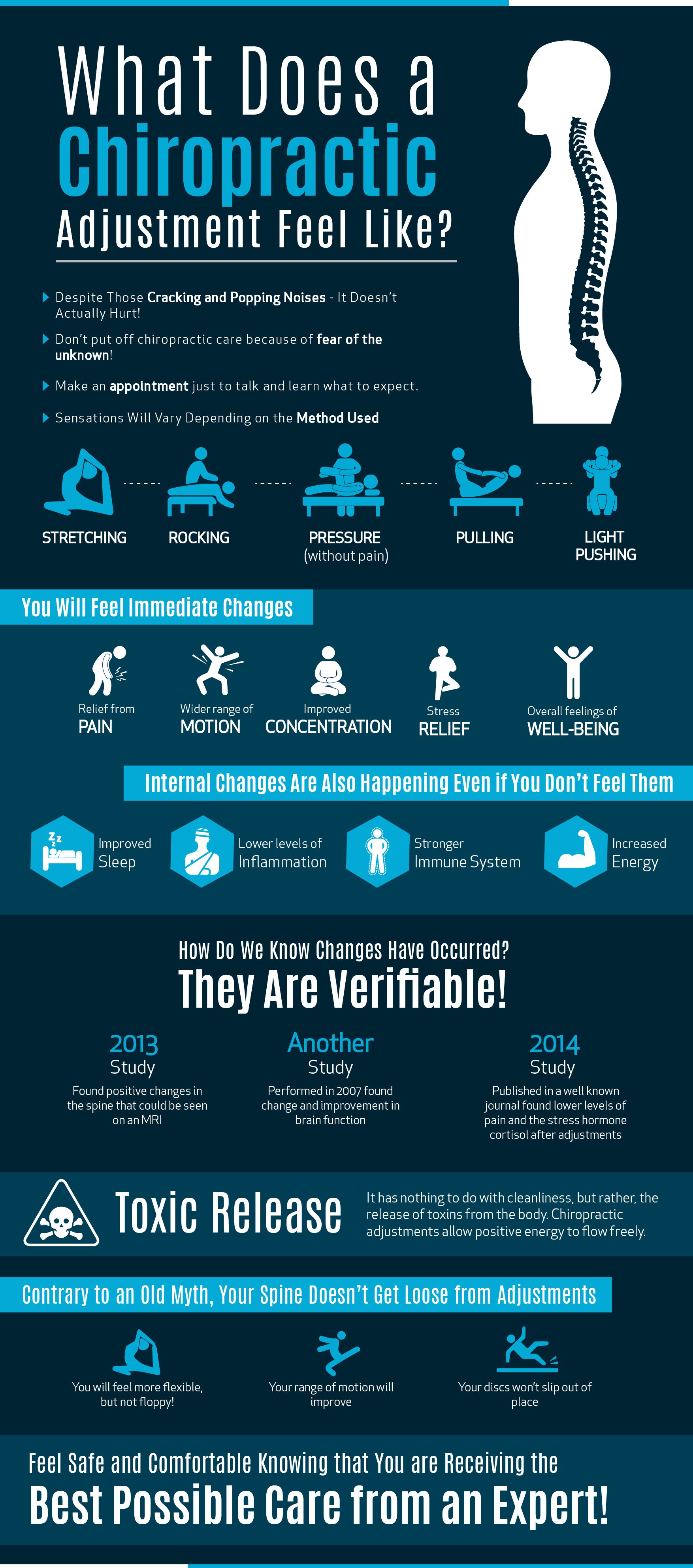Why Does Soft Tissue Therapy Hurt? Comprehending The Refine
Why Does Soft Tissue Therapy Hurt? Comprehending The Refine
Blog Article
Web Content By-Cleveland Conradsen
When you undertake soft Tissue therapy, you may discover it remarkably unpleasant. This discomfort arises as stress is related to tense muscular tissues and broken tissues, triggering your pain receptors. While it can really feel distressing in the minute, there's a reason behind this feeling. Comprehending what takes place in your body during these therapies can help you appreciate the procedure. So, what exactly is taking place underneath the surface area?
The Physiology of Discomfort During Soft Tissue Treatment
When you go through soft Tissue therapy, your body's action to discomfort is a complicated interaction of physical processes. As the therapist applies pressure, your body triggers pain receptors, sending signals to your brain. This triggers the launch of neurotransmitters, such as material P and glutamate, which amplify the feeling of pain.
Your muscle mass may also tighten in reaction, further complicating the experience. Furthermore, your body might release endorphins, all-natural painkillers that can aid alleviate some pain.
The communication between these processes can produce a special experience for each person. Comprehending this physiological feedback aids you browse the feelings during therapy, permitting you to appreciate the equilibrium in between pain and the capacity for recovery advantages.
The Role of Pain in the Healing Process
Although pain during soft Tissue treatment can feel overwhelming, it plays a crucial role in the recovery process. When you experience discomfort, your body is signifying that it's working to repair broken tissues. This action assists increase blood circulation to the damaged area, delivering vital nutrients and oxygen required for healing.
Furthermore, https://www.google.com/maps/place/Return+to+Play+Institute,+LLC+(Miami)/@25.726017,-80.26406,17z/data=!3m1!4b1!4m6!3m5!1s0x88d9b7b4207e8303:0xb1493a6e0d5a272b!8m2!3d25.726017!4d-80.26406!16s%2Fg%2F11lf8185yp?hl=en&entry=ttu&g_ep=EgoyMDI0MTAwOS4wIKXMDSoASAFQAw%3D%3D can advertise the release of endorphins, your body's natural medicines, creating a sense of relief post-treatment. Welcoming this pain can assist you recognize your body's limits and motivate you to attend to underlying issues.
While it's unpleasant currently, this process is vital for lasting healing and improved function. Acknowledging discomfort as a vital part of recovery can encourage you to stay committed to your treatment.
Tips for Taking Care Of Discomfort Throughout and After Treatment
Handling discomfort during and after soft Tissue therapy can considerably enhance your overall experience and recuperation.
To start, communicate openly with your therapist regarding your discomfort levels; they can adjust strategies appropriately. Using deep breathing techniques can additionally assist you relax and reduce discomfort.
Consider applying ice to the cured area post-session to minimize swelling and numb pain. Remaining moisturized help in the healing process, so consume alcohol lots of water.
Gentle extending and light movement after therapy can advertise blood circulation and simplicity stiffness. Lastly, guarantee you obtain ample rest to enable your body to recover.
Implementing these suggestions can make your soft Tissue therapy a lot more convenient and delightful.
Verdict
To conclude, while soft Tissue treatment can be unpleasant, it's vital to acknowledge that this pain plays an essential function in your healing journey. By comprehending https://www.prnewswire.com/news-releases/the-joint-chiropractic-emphasizes-posture-backpack-weight--tech-neck-as-kids-head-back-to-school-301367446.html at play, you can come close to the therapy with a much more favorable way of thinking. Remember, the preliminary pain frequently gives way to relief as your body launches endorphins. Accept the process, and don't think twice to make use of the suggestions for taking care of pain to improve your experience and recuperation.
